Types of Bowstrings
Types of Bowstrings
A bow isn’t much without a bowstring. In some cases, it would just be a stick. Modern materials have made bowstrings very durable and reliable yet this was not always the case. There are many types of bowstrings that were made and used by people throughout the ages. Some were made of simple materials and constructed in a straightforward way, while others had a more intricate construction process and a complex looping or knotting system. This article discusses the various types of bowstrings made and used throughout history and modern ones.

Traditional Bowstrings
Bowstrings are obviously as old as the bow and arrow. Strings or ropes in general are likely older still and would have had several uses as they still do. Archaic humans used the materials they found in nature to manufacture the first strings, cords, and ropes. Fibers from plant matter, are typically derived from the stalks of plants or barks of trees. These fibers would be braided or twisted to form a stronger string, which could be used for a great many things, including a string for a bow.
A search for the optimal bowstring material has been ongoing for at least 64,000 years. Bowstrings had to be manufactured with readily available material in the immediate environment. They should also be strong, specifically, the material should possess tensile strength. This refers to the ability of a material to be pulled or stretched without breaking. As well as being readily available and strong, the bowstring would also have to be durable. Fortunately, an abundance of natural materials with some or all of these properties existed for our ancestors.

A Note on String Forms
Bowstrings may be classified into three main forms. They are as follows:
- Simple strings. These are the oldest and as the name implies the simplest of all bowstrings. They are made from fibers that have been twisted into a single length of cord. This form has been constructed the world over and is still made by various hunter-gatherer groups in Africa and South America. These types of bowstrings are typically secured to the bow via a knot.
- Reverse-twisted strings. This type of string consists of several fibers that have been individually twisted in one direction, then these fibers are combined to form a larger string or cord by braiding the individually twisted wires together in the opposite or reverse direction than the one they were originally braided The widely used Flemish string for example, consists of two strings braided in opposite directions, then braided together in one direction or the other. The yumi or traditional Japanese bow used in kyudo also has a reverse-twisted string, with layers of fibers twisted in different directions.
- Looped strings. Typically the most robust and durable of the three string forms. As the name suggests this bowstring consists of a continuous loop of string. Some Asiatic bow like the traditional Ottoman Turkish bow consists of a looped string in the center with additional pieces of string tied to the ends to produce the loop which will enter the nock at either end.
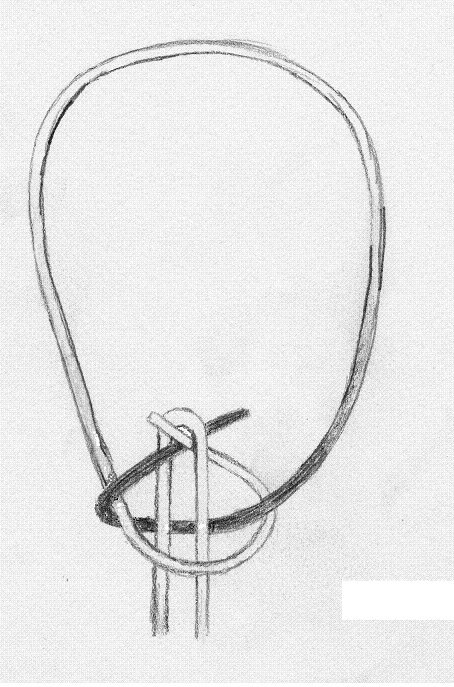
Bowstring Materials: Vegetable Fibers
As previously mentioned, vegetable fibers have long been used in the manufacture of strings, cords, and/or rope. Some of these fibers, such as those obtained from hemp, are still used to this day to make rope. As well as potentially being available in great abundance, some plant fibers possess great tensile strength and durability when braided or woven together.
Cane, Reed, and Bamboo Ribbon
To manufacture these types of bowstrings, a sufficiently long stock of a cane, reed, or bamboo is cut into a thin ribbon or sheet. The inside of this ribbon is scrapped leaving only the outer skin. The process typically takes place when the plant is fresh and green.
These types of bowstrings were widely made in Africa, New Guinea as well as on various south Asian bows.
Binding the string to the bow requires some form of knot. Several variations of knots have been used from simple ones to intricate ones. Also because the string is a thin strip, the arrows used on a bow with these types of bowstrings typically do not have a nock. This necessitates a primary or secondary arrow grip.
Bark
Another popular material for bowstrings the world over, from Africa to the Pacific islands as well as Amazonian tribes. This is indeed a highly available substance in the Amazon rainforest. First, long, rectangular strips of bark are removed from a tree. This strip is then beaten with stones or wooden mallets until a fibrous material can be extracted. Once these fibers are freed from the inside of the bark, they are rolled by hand to form thin threads, several of which are twisted or braided together to form a bowstring.
Flax
Flax or linseed has been cultivated and used for various purposes for several tens of thousands of years. Linum usitatissimum, of the family Linaceae, is a small flowering plant that grows about 1 meter tall. It produces a small (2 cm diameter) pale blue flower.
Production of bowstrings from flax requires the stocks to be left to rot in water and then scraped to produce a fibrous material. This fiber is then twisted into twine and combined by braiding it with others depending on the power (draw weight) of the bow.
Flax was a common bowstring material in medieval Europe. Most English longbows used in the 100 Years War of the 14th and 15th centuries were likely strung with flax bowstrings.
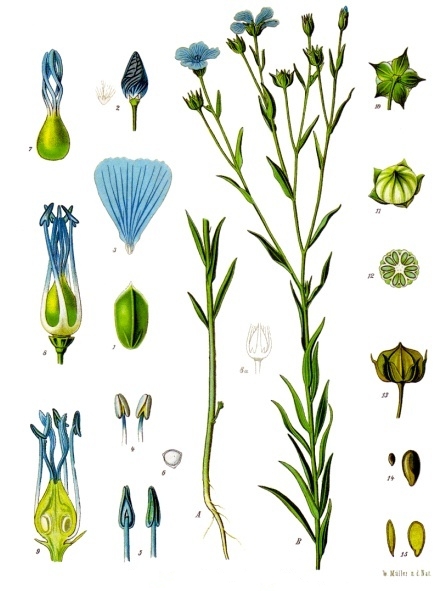
Hemp
Hemp is a fascinating plant for several reasons. It is indeed one of the very first plants to be cultivated by humanity. Also, hemp was among the first plants to be spun into fiber some 50,000 years ago. The hemp plant is a cultivar of the genus Cannabis sativa and was native the East Asia, but due to wide and prolonged cultivation, you can find it all over the world.
Recreational and/or medicinal uses as a drug being put aside, hemp has an enormous industrial utility. Everything from paper, rope, textiles, food, fuel, and even a type of biodegradable plastic, as well as bowstrings, can all be made from hemp.
The variant of cannabis used to make rope and bowstrings is a hardy plant, growing over 6 feet tall. It is in fact, along with bamboo, one of the fastest-growing plants on the planet. The stalks are treated with water then the fibers are removed, separated, then braided into a bowstring.
The Tsuru, the bowstring of the Yumi, the Japanese Kyudo bow is made from hemp. Long strands of hemp (a Yumi is typically over 2 m. long) are smeared with a liquid resin and twisted into thin strings. A loop is formed at both ends and wrapped with a silk ribbon. As a tsuru may break, a spare one is kept in a reel called tsurumaki.
Below is an image of a hemp stock with the separated fibers visible.
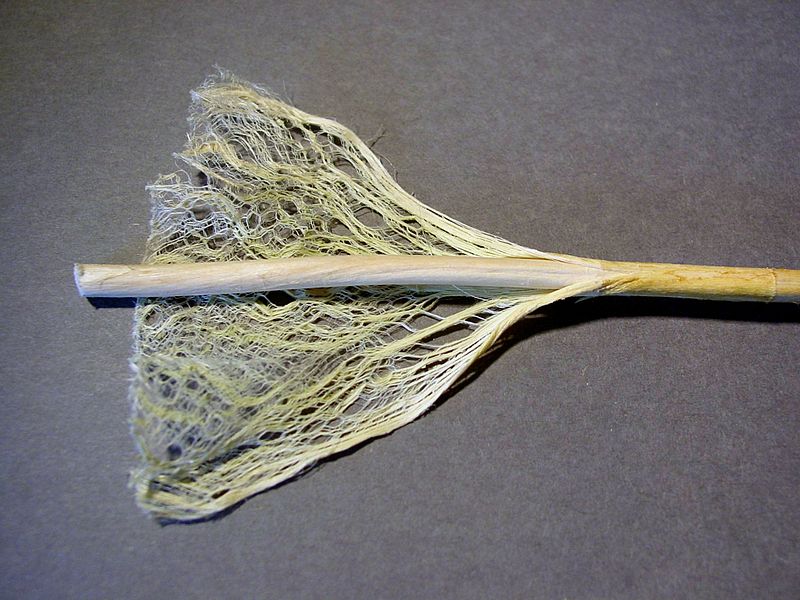
Bowstring Materials: Animal Fibers
Other than an abundance of plants, early humans would have also encountered and hunted a wide array of animals. All parts of the animal, if not able to be eaten, had their uses, either for decorative or practical applications. Certain animals, big and small possess certain body parts that can be used to make bowstrings. Some areas of the world, such as the harsh and dry eastern Eurasian steppes would not have plants in abundance, other than grass. Despite this, cultures of the Eurasian steppes were able to forge some of the most intricate and best-performing bows of the ancient and medieval world. This was done with the aid of materials obtained from animals.
Silk
Silk was and to a certain extent still is a luxury item. Used to make fabrics and clothing for the well-to-do of ancient Eastern civilizations. Silk is not easy or quick to make, yet the inherent properties of silk give it amazing tensile strength.
The practice of silk cultivation seems to have commenced in China several thousand years ago (the oldest surviving example is dated to 3630 BC).
Silk is actually a product produced by various insects, specifically the larvae of several species of moth. When the larvae, worm, or caterpillar is ready to undergo metamorphosis and become an adult, it spins itself into a cocoon from silk. It is from these cocoons that silk is derived. The most common silkworm used to make silk is the Bombyx mori.
Silk farming is known as sericulture and the Chinese were eager to guard its secrets for thousands of years, yet the information regarding its manufacture eventually reached Korea, Japan, and India.
The process of sericulture is quite labor-intensive. Also, the process involves large amounts of precursor materials, namely the leaves the silkworms eat, as well as the silkworms themselves.
To give the reader a better idea of the process and its end result, to produce 1 kg of silk, 104 kg of mulberry leaves must be eaten by 3000 silkworms.
Because of the expense of silk, they are rarely seen as bowstrings, yet some examples of medieval Turkish and German crossbows still preserved have silk strings.

Hide
A popular bowstring material in Africa throughout the ages amongst hunter-gatherers. Several of the repeating crossbows of the medieval Chinese were strung with cured donkey hide strings.
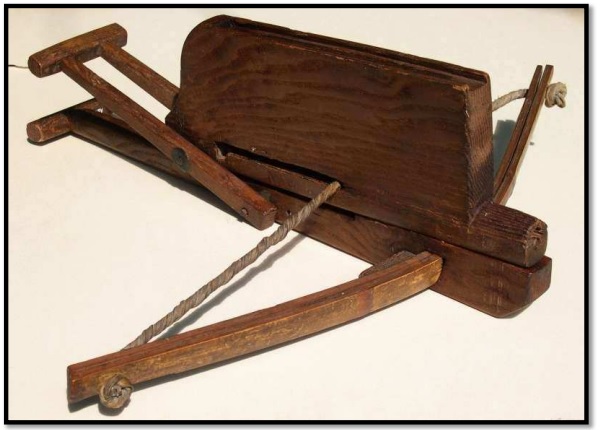
Sinew
Sinew is a great material for bowstrings and the backing of bows themselves, as in the Asiatic composite recurves. Bowstrings made from sinew have been used all over the world. From the bows of the Inuit within the arctic circle to the nomads of the steppe and the hunters of South Africa, sinew is the real deal, Holyfield. Sorry I got carried away there.
Preparation involves severing the tendon, (typically the hamstring) of a large animal, such as a deer, horse, camel, goat, or even ostrich. Next, the tendon is dried in a cool place. Once sufficiently dehydrated, the tendon is beaten vigorously until fibers can be extracted. Then in the usual fashion, they are braided and/or twisted together to form a bowstring.
One disadvantage of using sinew as a material for bowstrings is that it is greatly affected by moisture and humidity. The bowstring must be protected with wax or resin.
Modern Bowstrings
And this brings us to the modern era. With our chemistry and sciences, modern materials, and manufacturing processes we have improved upon the materials of our ancestors.
Steel
Before we get into some truly modern materials (19th century AD and beyond) we will make mention of steel bowstrings. These were typically used for higher-powered crossbows in the late medieval period. They definitely check the boxes when it comes to
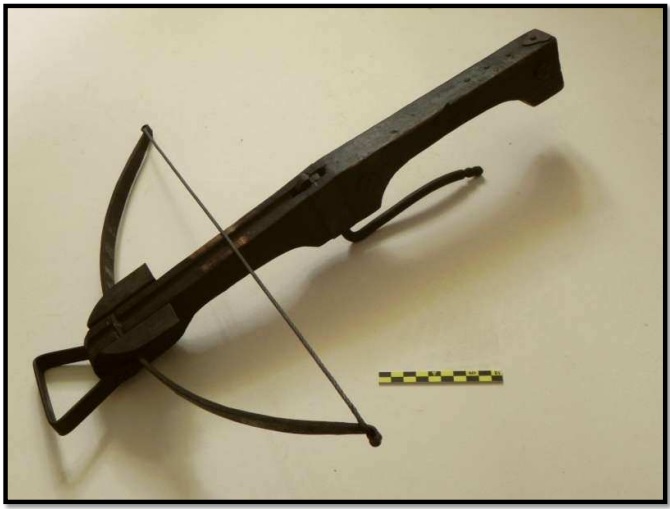
Dacron
Dacron is the trade name of modern plastic which goes by the chemical name of Polyethylene terephthalate. This plastic is stronger for its weight than any natural material and is water-resistant. Dacron is fairly stretchy and reduces hand shock upon release (strength per strand = 22.5 kg (50 lb), stretch = 2.6%). In modern times it is used by archers the world over.
Kevlar and other polymers are denser and have higher tensile strength but are not as reliable as good old dacron.

Fastflight
Is Dacron not good enough for you? Do you think you are better than me? Anyways, let us briefly touch on Fastflight bowstrings. Flashlight, like Dacron, is a polymer (plastic) and it is actually a trade name. The brand name is owned by the company Brownell. You may check out their site here: https://brownellarchery.com/product/fast-flight-plus-bowstring/
Being less resistant to stretching as compared to Dacron, Fastflight is usually recommended for more advanced archers. Also, the nocks or string grooves should be sturdy and reinforced as this resistance to stretching can cause damage to the bow tips.

String Building Machines
For millennia, bowstrings were made by hand. Well, that has all changed. Now there are intricate machines and jigs that help the string maker. Computers also come into play. Check out this video for a demonstration of modern bowstring building machines in action.
Bowstring Maintenance
Bowstrings should be replaced as they will wear over time with repeated use. The replacement does obviously vary considerably depending on how much they are used. Waxing a bowstring helped protect some moisture-sensitive materials such as sinew.